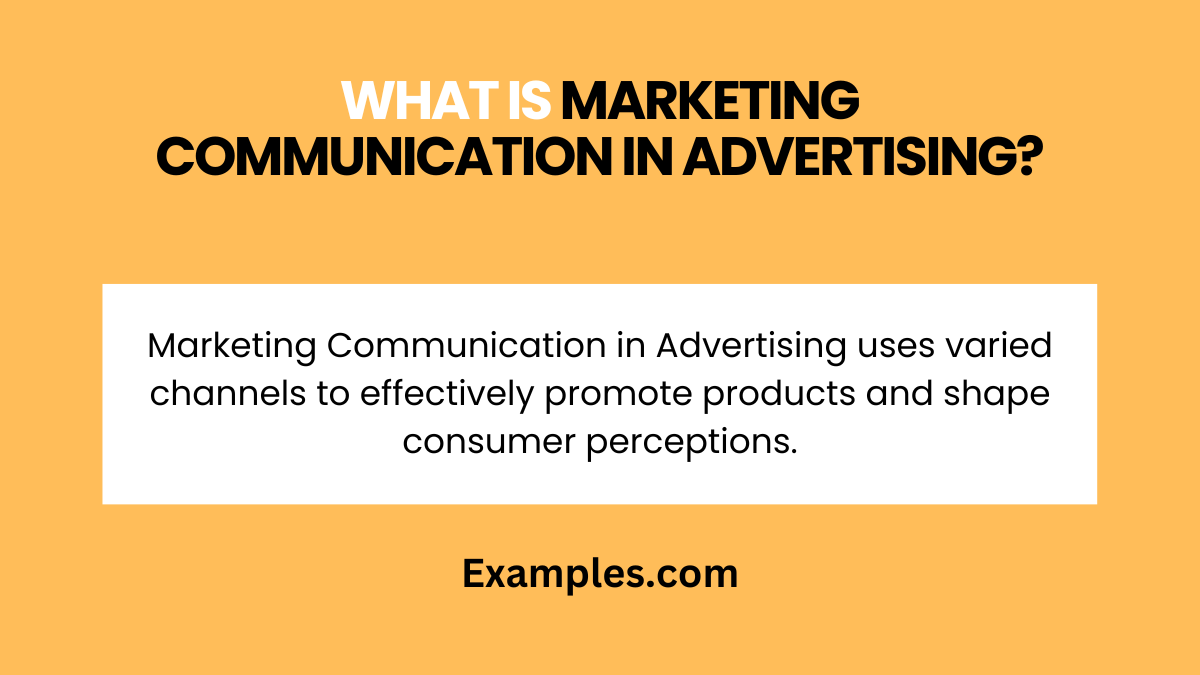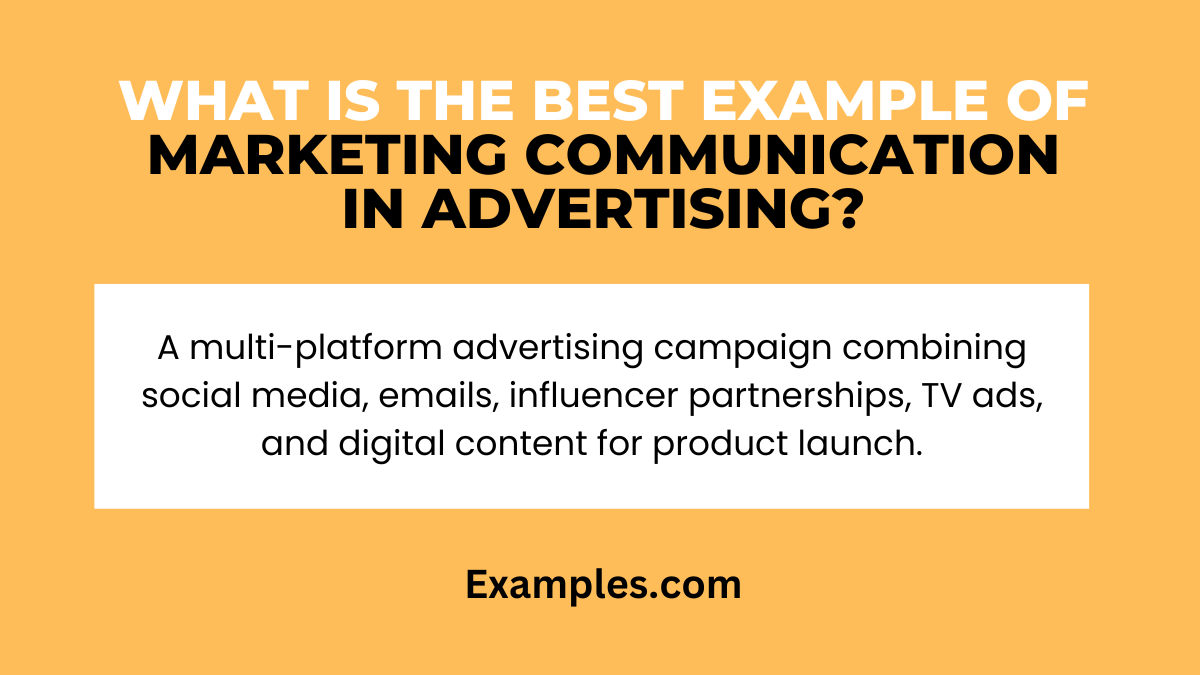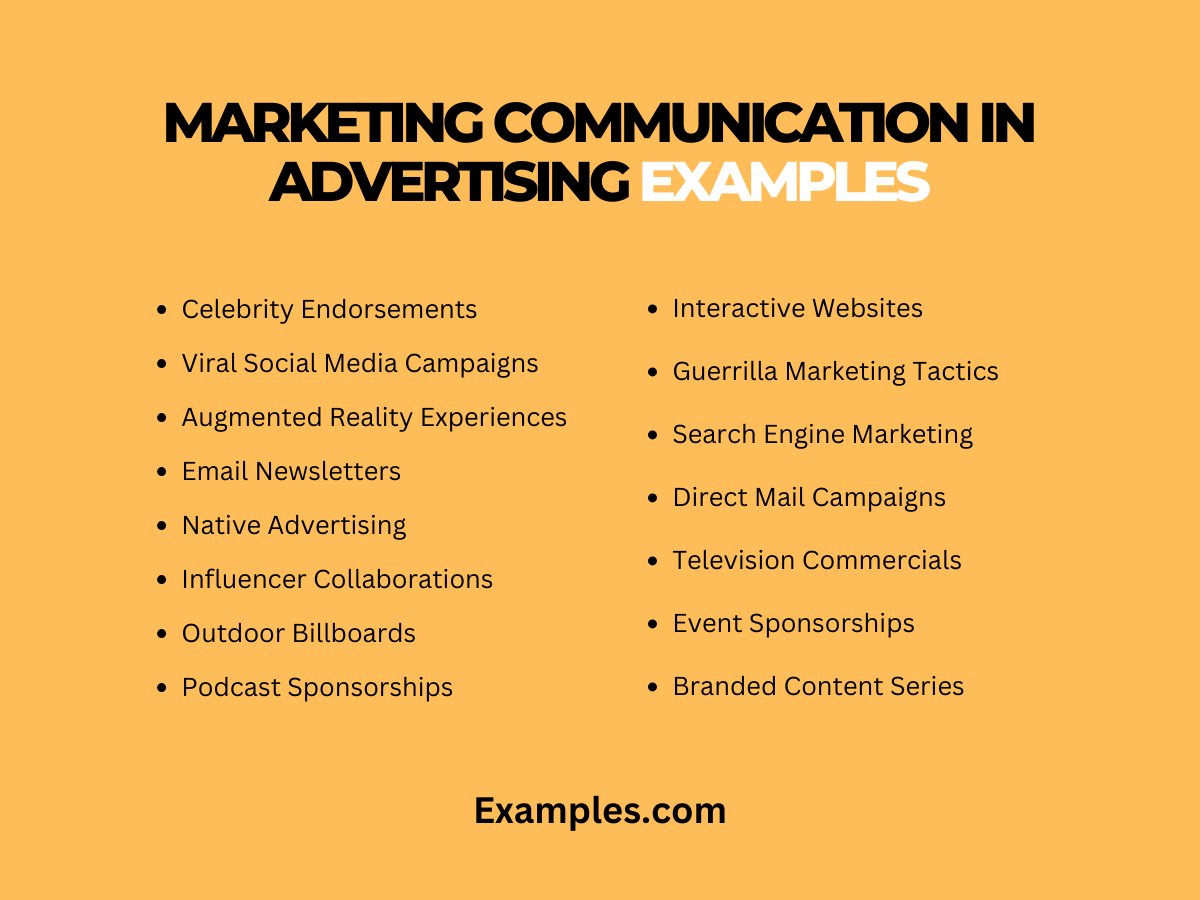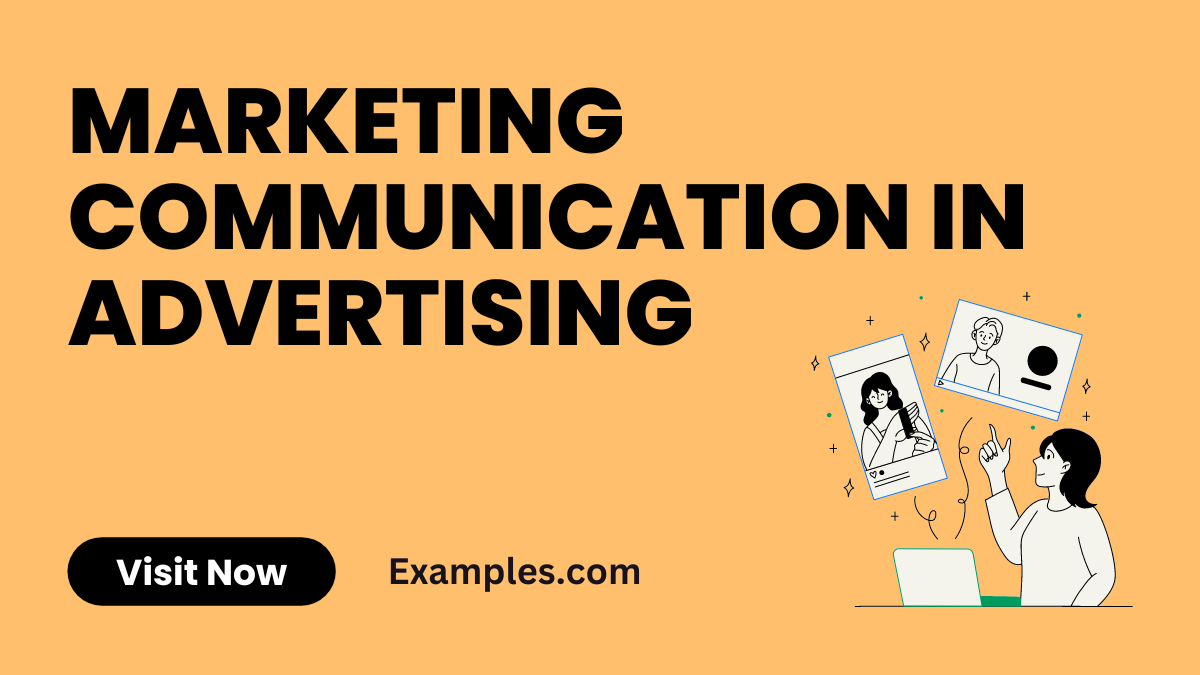14+ Marketing Communication in Advertising Examples
Delve into the intricate world of Marketing Communication in Advertising with our comprehensive guide. This resource is meticulously crafted to provide insights into how internal strategies and external communication efforts converge to create powerful advertising campaigns. From traditional media to digital platforms, learn the nuances of crafting messages that resonate with audiences, illustrated through real-life examples. Ideal for marketers and businesses aiming to amplify their advertising impact.
What is Marketing Communication in Advertising?

Marketing Communication in Advertising refers to the strategic use of various communication channels and techniques to promote products, services, or ideas. It’s an integral part of the advertising process, involving the creation and dissemination of messages that resonate with the target audience. This encompasses a range of methods, from visual and verbal communication to digital communication, all aiming to influence consumer perception and behavior. Simply put, it’s about how effectively a brand communicates its message through its advertisements.
What is the Best Example of Marketing Communication in Advertising?

A prime example of Marketing Communication in Advertising is seen in comprehensive, multi-platform campaigns that seamlessly integrate various communication channels for maximum impact. For instance, consider a global brand launching a new product. The campaign might begin with a buzz-building teaser on social media, followed by a series of targeted email campaigns and influencer partnerships. The launch would then be amplified with high-profile television commercials, complemented by interactive digital ads and personalized content on various platforms.
15 Marketing Communication in Advertising Examples

Embark on a journey through the multifaceted landscape of Marketing Communication in Advertising with these 15 compelling examples. Each one showcases a unique blend of creativity and strategic planning, utilizing various communication channels to effectively reach and engage audiences. From classic print ads to innovative digital campaigns, these examples highlight the diversity and potential of advertising strategies in today’s fast-paced, media-saturated world.
- Celebrity Endorsements Utilizing popular figures to endorse products. Example: “See [Celebrity Name] in our latest fashion campaign.”
- Viral Social Media Campaigns Creating content designed to be shared widely on social media. Example: “Join our #Challenge and be a part of the movement!”
- Augmented Reality Experiences Integrating AR for interactive product demonstrations. Example: “Experience our product in AR and step into the future.”
- Email Newsletters Regular updates and offers sent to subscribers. Example: “Get the latest news and exclusive deals in our newsletter.”
- Native Advertising Ad content that blends seamlessly with the platform’s regular content. Example: “Discover our lifestyle tips in the latest [Magazine Name] issue.”
- Influencer Collaborations Partnering with social media influencers for product promotion. Example: “Check out [Influencer Name]’s take on our new product range.”
- Outdoor Billboards High-visibility ads in strategic locations. Example: “Catch our eye-catching display on Main Street!”
- Podcast Sponsorships Advertising during popular podcast episodes. Example: “This episode is brought to you by [Brand Name].”
- Interactive Websites Websites that engage visitors with immersive experiences. Example: “Explore our interactive site to learn more about our services.”
- Guerrilla Marketing Tactics Unconventional strategies that create buzz in public spaces. Example: “Did you spot our surprise installation downtown?”
- Search Engine Marketing Paid advertising on search engine results pages. Example: “Find us at the top of your next search.”
- Direct Mail Campaigns Sending physical promotional materials to potential customers. Example: “Check your mail for our special offer leaflet.”
- Television Commercials Memorable ads aired during popular TV shows. Example: “Don’t miss our new ad during the prime-time show tonight.”
- Event Sponsorships Associating the brand with events for visibility. Example: “Proudly sponsoring the [Event Name].”
- Branded Content Series Series of content pieces like videos or articles carrying the brand’s message. Example: “Tune into our weekly video series for exciting insights.”
Marketing Communication in Advertising Management
In the sphere of Advertising Management, Marketing Communication plays a pivotal role. It involves crafting and disseminating messages that align with the brand’s values and resonate with the target audience. This process requires a strategic blend of various communication elements, including internal coordination among teams and external media planning. Effective management of these elements ensures that the advertising efforts are cohesive, targeted, and impactful, ultimately driving the brand’s message home to the intended audience.
What is the Role of Advertising in Marketing Communication?
Advertising stands as a cornerstone in Marketing Communication, serving as the most direct and impactful way to reach consumers. It’s the loudspeaker through which a brand communicates its message to a wide audience. The role of advertising extends beyond mere promotion; it involves creating a narrative that connects with the audience at an emotional level, using both visual and verbal communication. In this context, advertising is not just about selling products or services but about building a brand’s identity and values in the minds of consumers.
How does Marketing Communication enhance Advertising Campaigns?
Marketing Communication significantly enhances advertising campaigns by ensuring a unified message across all platforms. This integration involves meticulous planning and internal coordination to align various elements like digital communication, print media, and broadcast advertising. The synergy of these elements results in a more powerful and coherent campaign. For instance, integrating social media storytelling with traditional advertising creates a more engaging and immersive experience for the audience, thereby amplifying the campaign’s effectiveness.
What are Some Common Strategies for Marketing Communication in Advertising?
In the realm of Marketing Communication in Advertising, several strategies stand out:
- Multi-Channel Approach: Leveraging various channels, from traditional media to digital platforms, ensures a broader reach and appeals to different audience segments.
- Targeted Messaging: Crafting messages that speak directly to the needs and interests of specific audience groups enhances the relevance and impact of the campaign.
- Consistent Branding: Maintaining a consistent brand voice and visual style across all mediums strengthens brand recognition and recall.
- Engaging Content: Creating content that is not only informative but also entertaining and engaging can significantly increase audience interaction and loyalty.
- Customer Feedback Integration: Actively incorporating customer feedback into advertising strategies ensures that the campaigns remain relevant and customer-centric.
In conclusion, this guide on Marketing Communication in Advertising demonstrates the importance of a multifaceted approach. Combining traditional and digital methods, from personalized emails to influencer partnerships, ensures a broad and effective reach. These examples and tips offer a roadmap for crafting compelling advertising strategies that resonate with diverse audiences, ultimately driving engagement and business success.



